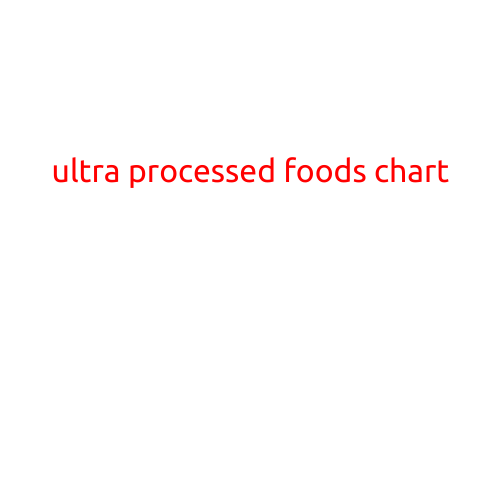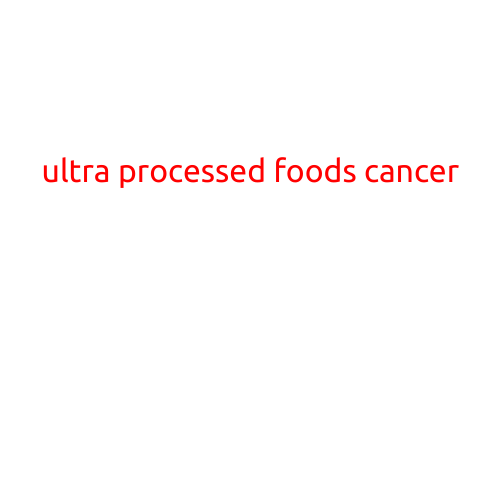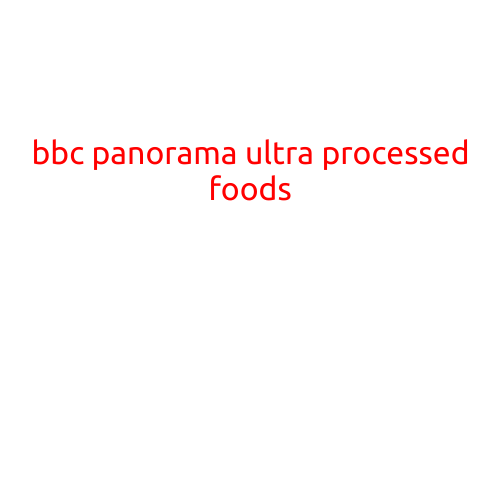
Ultraprocessed Foods Chart: Understanding the Ingredients and Risks
In recent years, the concept of “ultraprocessed” foods has gained significant attention in the health and nutrition community. These foods are manufactured using a combination of industrial processes and ingredients that can alter their chemical composition and nutritional value. In this article, we will examine the characteristics of ultraprocessed foods and provide a comprehensive chart to help you understand the ingredients and risks associated with them.
What are Ultraprocessed Foods?
Ultraprocessed foods are defined as products that use a combination of industrial processes and ingredients to create a final product that is significantly different from its natural form. These foods are often created using advanced technologies such as extrusion, molding, and frying, which can change the chemical composition and nutritional value of the ingredients.
Examples of ultraprocessed foods include:
- Microwaveable popcorn
- Frozen pizza
- Canned soups
- Processed snack foods
- Energy bars
- Meat substitutes
- Sauces and dressings
Characteristics of Ultraprocessed Foods
Ultraprocessed foods share several common characteristics:
- High levels of added sugars, salt, and unhealthy fats
- Low levels of essential nutrients, such as fiber, vitamins, and minerals
- Presence of artificial additives, such as preservatives, colors, and flavors
- Often contain few or no whole ingredients
- May contain novel ingredients, such as acrylamide or hexane-extracted soy protein isolate
Risks Associated with Ultraprocessed Foods
Consuming ultraprocessed foods regularly has been linked to several health risks, including:
- Weight gain and obesity
- Increased risk of chronic diseases, such as type 2 diabetes, cardiovascular disease, and certain cancers
- Negative impact on gut health and the gut microbiome
- Potential neurological and behavioral problems
Ultraprocessed Foods Chart
To help you navigate the complexities of ultraprocessed foods, we have created a chart that breaks down the ingredients and potential risks associated with each category. Please note that this chart is not exhaustive, and it is always a good idea to consult with a healthcare professional or registered dietitian for personalized guidance.
| Foods | Ingredients | Potential Risks |
|---|---|---|
| Microwaveable Popcorn | Corn, salt, sugar, artificial flavors, preservatives | Weight gain, gut health issues, potential contamination from cooking oil |
| Frozen Pizza | Wheat flour, tomato sauce, cheese, sugar, salt, artificial preservatives | High in saturated fat, sodium, and sugar; potential gut health issues |
| Canned Soups | Broth, vegetables, meat, salt, sugar, artificial preservatives | High in sodium; potential gut health issues, foodborne illness from canning |
| Processed Snack Foods | Wheat flour, sugar, salt, artificial flavors, preservatives | High in added sugar, sodium, and unhealthy fats; potential energy crash and mood swings |
| Energy Bars | Oats, sugar, nuts, seeds, artificial preservatives | High in added sugar and sodium; potential gut health issues and energy crashes |
| Meat Substitutes | Soy protein isolate, wheat gluten, corn, sugar, artificial preservatives | Potential gut health issues, foodborne illness from contaminants |
| Sauces and Dressings | Sugar, salt, artificial preservatives, vegetable oils | High in added sugar, sodium, and unhealthy fats; potential gut health issues |
Conclusion
Ultraprocessed foods are a common part of many diets, but they can have significant negative impacts on our health. By understanding the ingredients and potential risks associated with these foods, you can make informed choices about your diet and prioritize whole, nutrient-dense foods. Remember to always check food labels and consult with a healthcare professional or registered dietitian for personalized guidance.
References
- (1) Louie et al. (2018). Ultra-processed food consumption and the risk of type 2 diabetes. Am J Clin Nutr.
- (2) Aguilera-Escobedo et al. (2020). Consumption of ultra-processed foods and gut health: A systematic review. Nutrients.
- (3) Schwingshackl et al. (2020). Food processing and cancer risk: A systematic review and meta-analysis. Nutrients.





